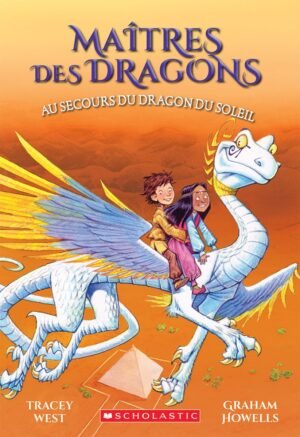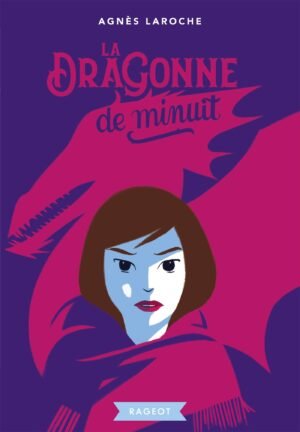Raising bilingual children opens up a world of possibilities, enhancing cognitive abilities, cultural understanding, and communication skills. But fostering language development, especially through reading, can be a challenge. Selecting the right French books for your bilingual children plays a key role in helping them grow confidently in both languages.
Whether your child is just beginning to learn French or is already fluent, this guide will help you pick the best French books to support their bilingual journey. And for parents in the U.S., My Bulle Toys is a leading source for a vast selection of French literature that perfectly matches your child’s language needs.
1. The Benefits of Bilingual Reading for Kids
Understanding the importance of bilingual reading is essential. Reading in both French and English helps children develop strong linguistic abilities across both languages. Studies show that children exposed to dual languages from an early age can improve problem-solving skills, creativity, and even academic performance.
Cognitive and Linguistic Development
Reading regularly in French and English supports stronger brain development, enhancing skills such as memory retention and logical thinking. Bilingual children tend to perform better in tasks that require multitasking and decision-making, as their brains are constantly navigating between two languages. This mental agility has been linked to improved academic performance and better attention control.
Strengthening Cultural Identity
Books also play a significant role in helping bilingual children connect with their heritage. French literature introduces children to values, traditions, and stories from the Francophone world. When children read in French, they are not only learning the language but also gaining a deep understanding of French culture, helping them develop a stronger sense of identity.
2. How to Select Age-Appropriate French Books
Choosing the right book depends on your child’s age, language proficiency, and interests. Here’s a breakdown to guide you:
Toddlers and Preschoolers (Ages 1-4)
At this stage, repetition and simple words are essential. Look for board books with vibrant illustrations and clear text. Interactive books that allow toddlers to touch, lift flaps, or follow along with repetitive text help with engagement.
Popular choices include the Petit Ours Brun series and T’choupi, which introduce fundamental concepts and vocabulary through stories of everyday life. Mon Imagier des Couleurs (My Color Book) is a great example of a bilingual option where children learn vocabulary through images.
Pro Tip: Keep reading sessions short but consistent. Young children respond best when reading becomes part of a routine. Aim to introduce a mix of bilingual books, with both French and English text on each page.
Early Readers (Ages 5-7)
Once your child is ready to read independently, early reader books with short sentences and familiar topics work best. Les Trois Brigands and Le Renard et le Lutin are great examples that combine narrative with beautiful lessons. If you’re looking to encourage independence, series like Mes Premières Lectures cater to early readers, offering fun, easy-to-understand stories.
Fluent and Older Readers (Ages 8-12)
For children who are comfortable reading in French, you can introduce chapter books and more complex literature. J’ai décidé de t’écrire is always a great choice for this age group, as it offers familiarity while still challenging their French skills. French classics, such as Les Misérables, introduce more complex vocabulary and provide cultural context.
3. The Importance of Tailoring Books to Interests
While age and proficiency level are important, so are your child’s individual preferences. When children enjoy what they are reading, they engage more fully, which accelerates learning.
Fantasy and Adventure Enthusiasts
If your child enjoys action-packed stories, consider books like Une histoire à quatre voix from Anthony Browne in French or Devine combien je t’aime, which introduce exciting adventures while reinforcing French vocabulary. These types of books also introduce a wide range of new vocabulary, from magical terms to historical references, making language learning more immersive.
Animal Lovers
For children who love animals, consider books like Le Loup Qui Voulait Changer de Couleur. Such stories often blend humor with important life lessons, making them ideal for language development. The visual imagery in animal-themed books often serves as a helpful language aid, as children link new words with the pictures they see.
4. Building a Bilingual Reading Routine
Success in bilingual reading comes from consistency. Here are a few tips to build a routine:
Integrate Reading into Daily Life
Incorporate French reading into your child’s daily routine. You can switch between French and English books, helping your child transition naturally between languages. For instance, designate bedtime stories in French while reading other books in English during the day.
Choose Bilingual Books for Family Reading Time
Bilingual books with both French and English text allow families to read together, even if not all members speak French fluently. This is particularly helpful for parents who are learning French alongside their children.
Encourage Expression Through Storytelling
After reading a book, ask your child to retell the story in French. This encourages them to think critically about what they’ve read while practicing language expression. Discussions about favorite characters or plot points in French are also a fantastic way to expand vocabulary.
5. Introducing Cultural Understanding Through French Books
French books introduce more than just language—they open the door to rich cultural experiences.
Traditional French Tales
Introduce classic French stories such as Le Petit Chaperon Rouge (Little Red Riding Hood) or Les Trois Petits Cochons (The Three Little Pigs). These tales not only provide valuable lessons but also expose your child to cultural traditions.
Stories from Francophone Countries
Expand beyond France with literature from Quebec, West Africa, and the Caribbean. Books like Le racisme et l’intolérance highlight cultural differences while teaching universal themes, enriching your child’s worldview.
6. Understanding the Stages of French Language Development
Knowing where your child is in their French language journey can help you pick the right books. Here’s a quick overview of typical language development stages:
Beginner Level
At this stage, your child may rely heavily on pictures and familiar words to understand the text. Board books with simple text and high visual aids work best.
Intermediate Level
Children at this level can understand basic sentence structures and vocabulary but may struggle with complex grammar. Early reader books and bilingual texts can help bridge this gap.
Advanced Level
Fluent readers are ready for chapter books and stories that require more abstract thinking. Books like Le Petit Nicolas are fantastic, as they introduce humor and new grammar concepts.
7. Where to Find Quality French Books in the U.S.
For bilingual parents in the U.S., finding French books can be challenging. My Bulle Toys provides an excellent solution, offering a curated selection of high-quality French books for all ages. Whether you’re looking for bilingual board books, chapter books, or French-language classics, My Bulle Toys is your one-stop shop for all your French reading needs.
We source their books directly from France and other French-speaking countries, ensuring authenticity and a wide range of choices. Plus, our collection grows continuously, so you’ll always find something new and exciting for your child.
8. Making French Reading Fun and Interactive
Here are a few additional strategies to make French reading a more engaging and interactive experience:
Use Audiobooks and Read-Aloud Apps
Introduce audiobooks in French to add variety to your child’s reading routine. Listening to native speakers enhances pronunciation and helps children grasp the rhythm of the language. Auzou and Nathan books are ideal for this method, with titles like T’choupi or Le Loup being great examples.
Combine Reading with Visual Storytelling
Encourage your child to draw scenes from the books they read. This visual storytelling can help reinforce what they’ve learned, making reading a more interactive process.
9. How Reading in French Builds Confidence
Ultimately, reading in French gives bilingual children the confidence to use the language outside of the classroom or home. It improves their speaking and listening skills and encourages independent exploration of the language.
Conclusion
Choosing the best French books for your bilingual children is a powerful way to support their language journey. By focusing on age-appropriate, engaging, and culturally rich stories, and using resources like My Bulle Toys, you can foster a love for French reading that will stay with your children for life.




